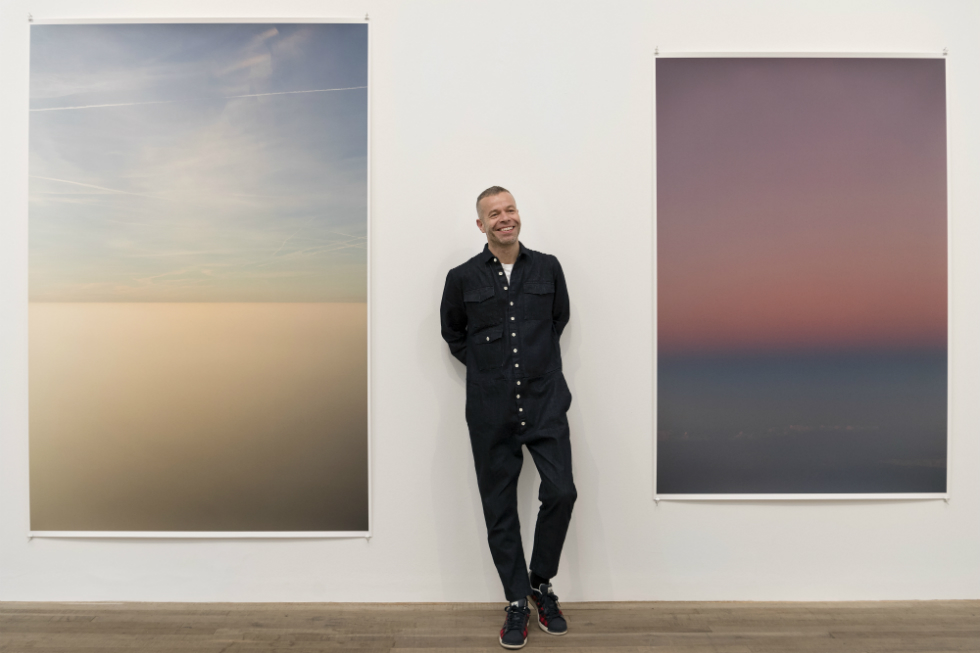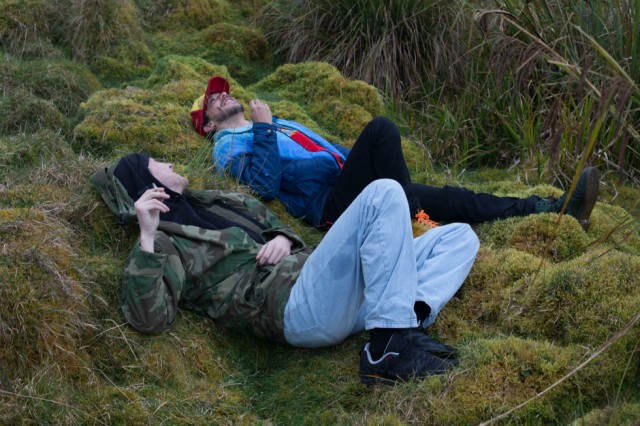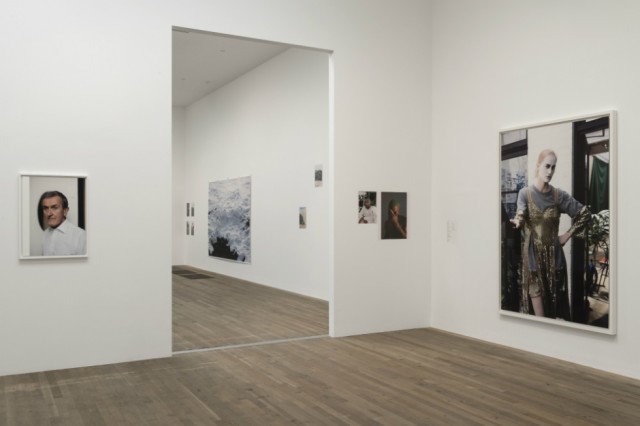“Tillmans demonstrates that photography is still free to shape the world”: Wolfgang Tillmans — Reviewed

Jacob Charles Wilson considers Wolfgang Tillmans oeuvre 2003–present; depicting hedonism, “horrific” political relevance, and the messy reality of contemporary society…
There was a thick fog on my cycle over to Tate Modern; it was difficult for me to see ahead. As I rode along, peering through the haze, my thoughts ran. Where is photography today? How is it made and seen? Where will it be going? If these can’t be answered, why bother making it, how would it help? Questions about photography that have been continually asked since the mid-19th century, but important to pose again at the beginning of the 21st. Indeed, the introductory text of Tillmans’ new exhibition at Tate Modern aims these questions directly at photography within the context of now: “What are we to make of the world in which we find ourselves today?”
Born in West Germany in 1968, Tillmans has lived in London since 1992. He’s a photographer of the same generation as Juergen Teller and Craig McDean, and similarly made his name in fashion magazines; i-D, Butt, and Spex. Some of his best known works are of ravers in 1990s Berlin and London; their sense of youthful enthusiasm, hedonism, and unity snapped on 35mm film. This latest show takes a look at his work since 2003, the year of his last exhibition at Tate Britain. It is also significant as the show represents the definitive end of the (long) 1990s; a cultural and political atmosphere that lasted from the fall of the Berlin Wall to the invasion of Iraq. Here at Tate Modern, it looks as though Tillmans is assessing himself and his work throughout the intervening years; the show looks back to the issues and problems of the time, but rather than a neat chronological narrative, these are shown to be mixed up, complex and unresolved.
Tate Modern’s recent modernist photography exhibition The Radical Eye presented photography as a medium that had expired: galleries saturated by photographs; contemporary work a reproduction of that nearly a century old; decontextualised to the point that Soviet magazine spreads are hung in gilt frames. Tillmans demonstrates that photography is still free — perhaps even more so, as it’s no longer limited to a lens and film — to shape the world. Analogue screens have been photographed and blown up to the size of a wall, their grey static fuzz turned to pixelated fields of red, green, and blue. Images of withered and pale plants, weakened by lack of light, show photography as a process that occurs in nature as well as in the hands of people.

Tillmans talks about his method as “translating the three dimensional world into two dimensional pictures”, yet he is still interested in the objecthood of his images. Many photographs are printed on paper, and hang on the gallery walls from pins and nails that pierce their borders, and tape that grips to the sheets and paint. Heavy books and loose magazines are laid on tables, under and over glass. Tillmans emphasises the hard work that goes into producing these images; they never just appear on the camera, but are made by people who sit at desks, drink, eat, smoke, and worry. One photo, titled 17 Years Supply (2014), shows a box of sachets and bottles. I thought it was darkroom chemicals; only when I looked closer I saw that they were labelled: “To be taken after food.”
Despite the many claims of objectivity, photography is a medium of doubt; Tillmans doesn’t attempt to give an entirely accurate experience, just a partial one, as much as one man with a camera can. His ironic installation Truth Study Centre (2005-ongoing) attempts to move beyond these limits by turning to found objects; printed web pages of conspiracy sites and academic journals, press clippings, lottery tickets, names and dates that I remember from my own youth. The Iraq War features heavily, which gives the installation a horrific relevance, as the irreversible conflicts in the region roll on, driven by what has become a generational war, where the children of the original combatants are now fighting each other. George Bush and Tony Blair — figures who recently have seen something of a rehabilitation — grin from the vitrines. Tillmans is keen to keep all of these events in perspective, to show how close and how distant society is from some of its most significant reference points. Punctuating the exhibition are sheets of paper printed with slogans: “1969 was 24 years away from 1945. 24 years back from now is 1992”; and “Martin Luther King Jr’s ‘I have a dream’ speech was 27 years prior to 1990. 27 years past 1990 Donald J Trump was sworn in as the President of the United States”.

Yet Tillmans isn’t content with a passive documentation of events. Last year, during the build-up to the EU referendum, Tillmans made a series of posters supporting and promoting the “Remain” vote. At the time, I felt the posters were timid and insular to the art-world. But seeing them placed amongst his other works, and with the horror of hindsight, they appear much more powerful; a decisive message that many other cultural figures avoided to put forward. From his earliest works, Tillmans has engaged with informal politics, those issues outside of the official system. His association with fashion and clubs led to the youth politics of a newly united Europe, and his photographs sympathetically recognised and supported sexually and racially marginalised people. Much of this work is portraiture, collected in the many books he’s produced. These typically focus on the fragility and instability of people under capitalism, but they are also historical documents that show how much their positions have changed since Tillmans started working. Now, marginalised people are able to show themselves with lessened, if not absent, fear and resentment. Intimacy is no longer a crime; it was only in 2003 that Section 28, banning local councils from “promoting homosexuality”, was repealed. Tillmans has said that he sees distinct optimism in the presence of the marginalised in daily discourse and of the recent “return to activism”.
With these shifts in cultural attitudes, Tillmans’ aesthetics have in turn developed. He has never been known for a single iconic photograph or style; instead, his work has to be appreciated as a whole, a mix of commercial and art photography. He even considers entire rooms as a single “work”. The more recent pieces in the Tate Modern exhibition, however, show a great shift in his approach: a series of abstract photographs, including Silver (1998-ongoing), Lighter (2008-ongoing), and Greifbar (2014-5), hung throughout the gallery spaces. This triptych treats the photograph as an object that has some relation to history and action, but not in a representational or realistic sense. Silver is made by running photographic paper through dirty and broken printers; Lighter features photographic paper folded and scrunched into sculptural forms; and Greifbar by dripping developing chemicals over undeveloped paper. The contrast between these and the small format 35mm portraits that dominated his earlier work suggests that snapshot “realism” is unable to capture or express the concerns of today. While the exhibition is focused on Tillmans’ photographic work, it also shows how he has moved entirely outside of the field; his first video performance Instrument (2015) is projected in an adjoining room, while another is dedicated to his Playback Room project. This is Tillmans’ idea for a space designed for appreciating studio music at near perfect quality. His interest in experimental music is also leading to a series of accompanying live events to be held in Tate Tanks (until 11 March).
Of the questions that I had before visiting gallery, and that Tillmans seems to address throughout the show, one remained: Where do artists go from here? It’s an important issue that many younger photographers may ask themselves, and might indeed try to answer by looking to this inspirational practitioner. Tillmans, nevertheless, doesn’t dictate the direction for the future; he offers only what he can — his specific take on events from his position. The last room offers perhaps a more concrete, albeit partial, answer: it ends the show with a poignant set of works that are teased and previewed throughout the galleries. Large, highly abstracted photos of the sky and sea — similar to the images used for his pro-EU posters — hang alongside small, 4×6 snapshots of border zones at airport terminals. Images of the boundless sky and ocean, the possibility of free and open borders, alongside their messy reality, ferociously controlled by signs, barriers, and sheets of paper… Two potential aesthetics to be used together to direct us towards one of two potential, political paths.
Jacob Charles Wilson
See Wolfgang Tillmans at Tate Modern, London, until 11 June 2017 — £12.50
See Tillmans and collaborators live at Tate Modern’s South Tank until Saturday 11 March 2017 — FREE
Image credits: installation shots © Wolfgang Tillmans at Tate Modern. Second from top: Juan Pablo & Karl, Chingaza 2012 © Wolfgang Tillmans





